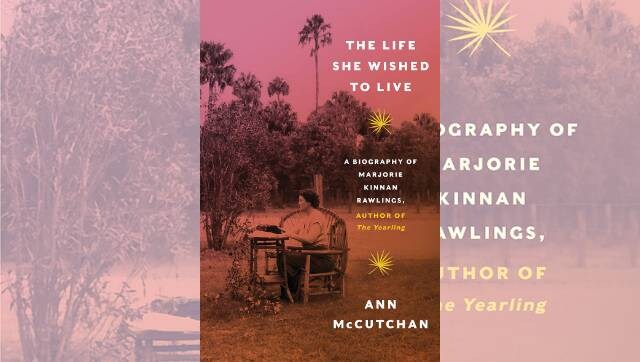The Identity Quotient review: An unbiased guide to Assamese Muslims, their origin and history
In the face of an upcoming govt survey to identify the indigenous Muslims of Assam, Zafri Mudasser Nofil's The Identity Quotient is a must read for all to know about the Goriya, Moriya, Deshi and Julha Muslims considered indigenous, as well as the Muslims of Barak Valley, who have been excluded from the survey

The Identity Quotient by Zafri Mudasser Nofil | Har-Anand Publications Pvt Ltd
Over the last few years, Assamese nationalism has been the focus of numerous opinions, arguments and much analysis. The issue is refusing to die down even after the publication of the final draft of the National Register of Citizens (NRC) in Assam. The newly-elected Himanta Biswa Sarma government has filed an affidavit with the Supreme Court seeking a 100 percent re-verification of the document.
What is clear though is that the question of Assamese identity is a complex one. Now, a proposed government survey aims to track down the indigenous Assamese Muslims — the Goriya, Moryia Deshi and the Julha.
"The Identity Quotient: The Story of the Assamese Muslims" by Zafri Mudasser Nofil presents a historical account of these four groups of Assamese Muslims, as well as the Muslims of Barak Valley who have been left out of the survey.
The Assamese Muslims came from foreign countries like Iraq as well as neighbouring areas like undivided Bengal, Bihar, Uttar Pradesh, Odisha and Manipur. Many of them were prisoners of war. They married locals and settled there. The current generation of Muslims in Assam are children of these settlers who went on to script their own history in Assam. Some Assamese Muslims also belong to local tribes who converted to Islam after being inspired by its teachings.
Over the years, the children of these Muslim settlers assimilated themselves into the local socio-cultural milieu and learned to speak Axomiya or Assamese language or some Assamese dialects.
Some have retained their Islamic beliefs, and adopted Axomiya as their mother tongue, while others have assimilated themselves into the Assamese way of life to such an extent that there's virtually no difference between them and the indigenous Assamese.
The book features many such stories of assimilation. The most fascinating is that of Azan Pir, a mystical figure, who came from Baghdad and settled in Assam in the 17th century. He is revered even today for his zikirs and zaris (folk songs) which promote unity and brotherhood between Hindus and Muslims.
The zikirs and zaris by Azan Pir are an important cultural element of Assamese literature and music. The legendary singer Bhupen Hazarika has also sung several of these folk songs of communal harmony.
The city of Hajo near Guwahati, which houses the dargah of Assam's first Sufi saint Ghiyasuddin Auliya, is also mentioned for its contribution to Hindu-Muslim unity. The annual procession, which is taken out on the occasion of Ashokastami festival (a Hindu festival) from the Haigrib Madhab temple in Hajo to the silk town of Sitalkuchi, and is incomplete without the participation of local Muslims.
The city also hosts the Sammanay Sobhayatra or harmony rally, which is held on the first day of the Assamese month of Magh (mid-January). It is noteworthy that the rally of Monikut Utsav has been organised by All Assam Students' Union (AASU) every year since the demolition of Babri Masjid in 1992.
The book also narrates the tale of a Muslim family that has been taking care of the Alipukhuri Patekibori Thaan (also known as xatra) at Moirabori in the Morigaon district of Assam for the last 40 years.
There is also a detailed account of a Muslim tailor named Chand Khan or Chand Sai, who gave up everything and became a follower of the 16th century saint Srimanta Sankaradeva, who propagated the neo-Vaishanvite religion — Eka Sarana Nama Dharma (Shelter in One Religion) — after meeting him for the first time. Even Azam Pir is known to have been impressed by the hymns of Srimanta Sankaradeva.
The amalgamation is seen in the architecture of mosques in the region as well. The Bor Masjid (built in 1570) and Horu Masjid (built in 1575) in the Jayantipur area of Nagaon's Kaliabor feature a combination of elements from Islamic architecture and local styles.
The food cooked in indigenous Muslim homes is a unique blend of Assamese and Mughlai cuisine. Khar (an alkaline made of the ash of banana peel) is an important ingredient in Muslim dishes, as is smoked and dried meat, and fermented or dry fish. Sidal, a fish-based preparation that can be preserved for months, is a favourite food item relished particularly by the Rajbongshis and the Muslims of Golpara.
Who are Assamese Muslims? |
|||||
| The indigenous Muslims, also known as tholua or khilonjia, can be categorised as Goriya, Moriya, Deshi and Julha. But they are not the only Muslims livingin Assam. Besides, them, there are also Syeds (considered part of Moriyas), the land title holders of Barak Valley, and the Maimals | |||||
| Goriya | Moriyas | Deshi | Julha | Muslims of Barak Valley | Maimals |
| Muslims in the Brahmaputra Valley are commonly known as Goriyas. As per the government of Assam, they comprise prisoners of war, converts from various tribes and also Syeds, who came to Assam during the rule of the Ahoms, married locals and settled here. | These are descendents of the nearly 1,000 soldiers taken captive by the Ahoms in the battle of Duimuni Sila in 1532. They are classified as More Other Backward Classes by the government of Assam. At present, they are found in nearly 85 villages in 12 districts of Assam. | he first batch of people in Assam to have embraced Islam, Deshis trace their lineage to Ali mech. About 20 lakh Deshi Muslims are spread across the districts of Goalpara Dhubri, Bilasipara, Kokrajhar, Kamrup (rural), South Salmara and Kamrup (Metro). | Originally from undivided Bihar, Odisha and West Bengal, the Julhas are concentrated in various tea gardens in the districts of Tinsukia, Dibrugarh, Charaideo, Sivasagar, Jorhat, Golaghat, Biswanath, Lakhimpur and Nagaon. Some common surnames are Ali, Ahmed and Ansari. Their main tongue is Khortha, and are listed as More other Backward Classes in Assam. | The indigenous Muslims in Barak Valley (comprising districts of Cachar, Hailakandi and Karimganj) bear surnames like Choudury, Mazumdar, Laskar, Barlaskar, Barbhuiya, Mazarbhuiya, Talukdar and Hazari and other regular titles mostly bought from Kachari kings Krishan Chandra and Govinda Chandra. Besides them, Manipuri Muslims are also believed to have settled in Barak Valley. | A Bengali speaking fishermen community whose presence in Assam is mentioned right from the 1891 Census. |
The assimilation conundrum
The author has narrated multiple examples of Hindu-Muslim unity in the book and shows how religious harmony is embedded in the Assamese identity and culture. But, in doing so, he hasn't shied away from pointing out that the CAA is antithetical to the Assamese identity.
While the historical narrative is fascinating, Assamese Muslims also occupy a somewhat contentious position in the Muslim faith. And perhaps sensing that many of them have begun returning to a puritanical form of Islam.
The Moriyas, for example, have given up a uniquely distinctive dialect called Duan, so as not to be considered a people of "barbarous speech as the Kacharis or Daphlas and be accepted as genuine Assamese and acknowledged members of Muslim community".
For the state, such developments represent a loss of identity, and hence, the survey: to help the indigenous Assamese Muslims protect their identity.
The state also appears to reccognise only those Muslims in Assam as indigenous who had not only managed to assimilate local traditions and culture, but also those whose Islamic beliefs had undergone a profound change to the extent of including pork in their diet and drinking liquor (both of which are prohibited in Islam). As of today, some indigenous Assamese Muslims continue to adopt Hindu customs, such as the use of sindoor during marriages (Deshi Muslims), and some follow local traditions and festivals like the Goru Bihu (an occasion where cows are washed, decorated and worshipped).
The proposed survey of indigenous Muslims will help identify indigenous Assamese Muslims and preserve their identity. But by excluding Muslims of the Barak Valley and the Maimals, a Bengali-speaking fishermen community whose presence in Assam is mentioned right from the 1891 Census, much like the NRC, the survey creates fissures between the Muslims of Assam.
In the face of a proposed survey of indigenous Muslims in Assam, the book also makes the reader question the cost of assimilation:
Will the adoption of a pure form of Islam potentially lead to the rejection of Goriyas, Moriyas, Deshis and Julhas as indigenous Assamese Muslims by the state? And if so, would it not amount to a systemic attack on religious freedom?
The final take
Any work on ethnic groups, and that, too, a minority, requires extreme caution, especially at a time when fake news, whataboutery, and media manipulation are at their worst. The author, without a doubt, does a thorough job of writing on such a sensitive topic.
At 180 pages, the book is a quick and easy read. The rearrangement of some chapters, though, was needed.
The author answers some very important questions on Assamese Muslims — who are they, where do they come from, and why are some of them accepted while others are not — without taking sides on the issue.
All in all, this book is a must-read for anyone who wishes to gain perspective on Assamese Muslims.
The Identity Quotient by Zafri Mudasser Nofil is published by Har-Anand Publications Pvt Ltd
also read

The Ventilator Project documents a thrilling 90-day startup journey, holds a mirror to our administrative flaws
The book makes one appreciate the challenges behind making a medtech product in India, while also showcasing the kind of roadblocks that an innovator faces when bringing their products to markets.

A new biography chronicles Marjorie Kinnan Rawlings, a novelist who went on a quest for an authentic life
Ann McCutchan’s plain-spoken new biography “The Life She Wished to Live” is a sensitive observation of Rawlings’ work and of her deeply unconventional life in general.

Author Laura Dave’s The Last Thing He Told Me is a suspenseful page-turner, soon to be turned into TV series
Dave often writes about women adapting to some change in their lives but suspense is a new genre for her and it works.